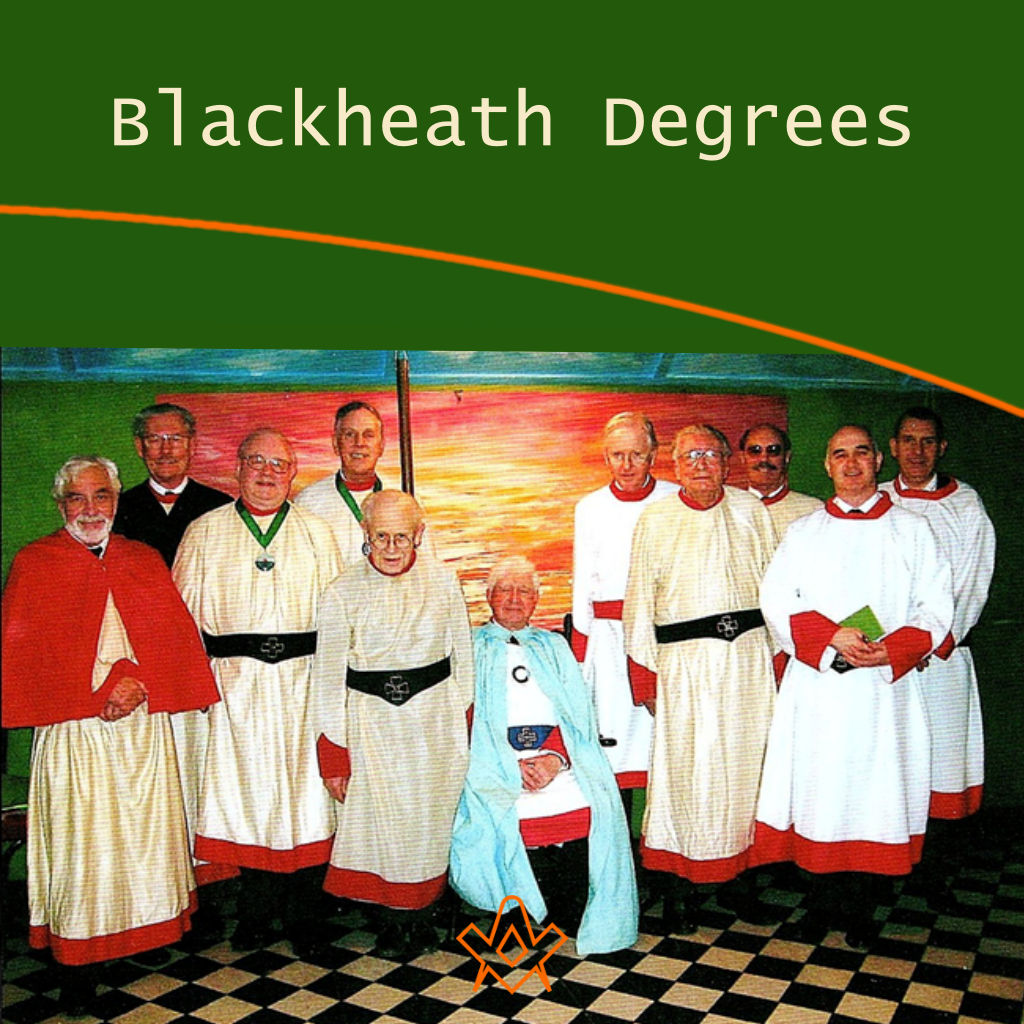Bro. Chris Hatton gives us his personal reflections on the history of the House at Blackheath and the Blackheath Orders, in this fascinating tribute to Andrew Stephenson, a remarkable man and Mason.
– This edited version was originally given as a talk.
I was privileged to meet Andrew Stephenson at my reception into Antioch Rose Croix Chapter No 10, in 1996, where he was a member and the Chapter organist, although I did not actually get to know him until 2000.
This started what I consider to be my awakening into the esoteric side of Freemasonry.
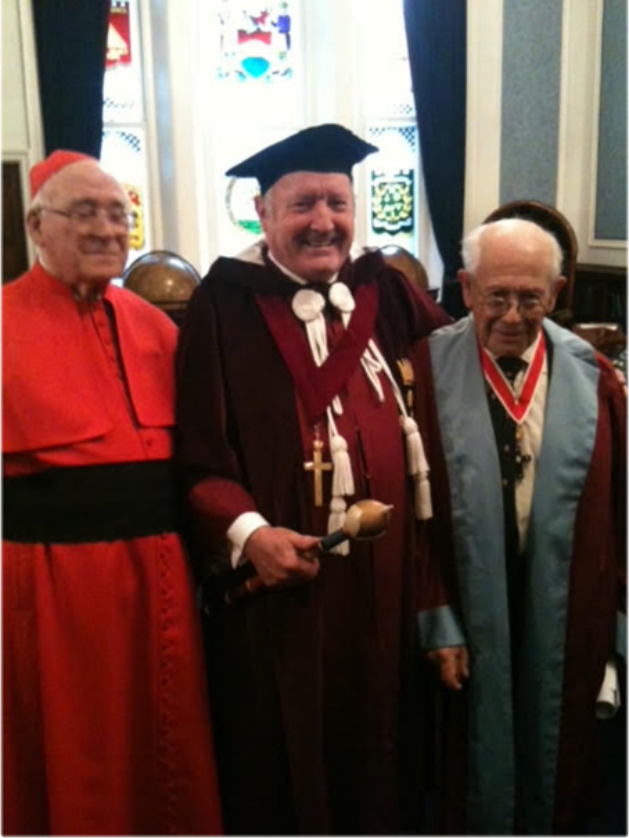
Andrew Stephenson, the house at Blackheath, and the Blackheath Degrees – On the right: Andrew B. Stephenson (1924-2021)
IMAGE CREDIT: Author
I was received into Norman Stamford College SRIA [Societas Rosicruciana in Anglia] and was absolutely bowled over by the ceremony.
At this meeting RW Frater Steven Turner, the then Assistant Secretary General, gave a report on the condition of Stanfield Hall (the SRIA HQ) there had been a major leak in the roof and the builders had made an awful mess, Steven reported that it would probably take the best part of six months to put the building back in use.
I was so impressed with the ceremony, that considering I ran a cleaning company I volunteered my company’s services to get things sorted and the following weekend we completely cleaned and replaced everything in the HQ, including every book in the extensive library.
Andrew was amazed and said it was better than ever. He was so impressed he asked that I introduce myself to him at Antioch Chapter, which I did, and the rest is history.
We became great friends, and this friendship was to last until Andrew’s retirement to New Zealand at the age of 83.
This is how I met Andrew which began an incredible journey of discovery for me.
I am going to talk about several Orders, and they are: Sir Thomas of Acon, Pilgrim Preceptors, the Hermetic Chapter of Spiritual Knight, the Hermetic Order of Martinists, the August Order of Light, and a non-Masonic Order – A. E. Waites’ Fellowship of the Rosy Cross.
I will try to give you an insight into Andrew as a man and Mason, and how his house in Blackheath played a major part in the history of every one of these Orders/Degrees.
Along with my good friend and Brother Simon Polkinghorne, who has contributed greatly to the contents of this talk, we belong to or have belonged to every Order that I am talking about, and in both our cases joined some of these Orders in Blackheath.
Andrew was a very enthusiastic Mason who really enjoyed the spiritual and esoteric side of Freemasonry; he spent nearly all his working life working for the Bank of England, until his move to New Zealand he had lived his entire life in the house at Westcombe Park Road.
Andrew led a very simple life, he owned a television but never watched it apart from his collection of Laurel and Hardy films, and he was also an avid model railway enthusiast, many brethren who met at the house will always remember seeing his train set laid out in the front room and woe betide anyone trying to play with it!
He was to all extent and purpose a true eccentric, he had no ego and was a true gentleman.
He had two great passions, the Metropolitan Study Group that had monthly meetings at the SRIA Hampstead HQ, at which those that attended were always surprised and delighted to be looked after by Andrew – ‘tea or coffee’ was always the welcome.
And his other passion was the Fellowship of the Rosy Cross, Arthur Edward Waite’s alternative Order to the Golden Dawn (this subject is worthy of another paper alone!)
He was a member of a lot of Orders as you can imagine, however he concentrated his efforts on only a few; he loved Rose Croix, Order of the Secret Monitor, and the Allied Masonic Degrees.
The Orders he put a lot of effort into and attained high rank were the SRIA (Supreme Magus), Pilgrim Preceptors (PGM), August Order of Light (Past Nomarch), Sir Thomas of Acon (PGM), Spiritual Knight (PGM), and Hermetic Order of Martinists (PGM). He also held high rank in the Operatives.

The house in Blackheath
left and centre – in the 1980s. right – as today
IMAGE CREDIT: Author
The house was situated in Westcombe Park Road and was on a corner plot, the thing that struck everyone was the size of the old German Gutenburg printer in the hall.
The first floor was decked out with shelf upon shelf of books that Andrew had printed at no cost for SRIA Metropolitan Study Group and other esoteric books for his own perusal along with an almost complete collection of Ars Quatuor Coronatorum (AQC), the QCCC annual publication.
There was then the staircase that led to the ‘Temple in the Loft’. Anyone who has ever been through a ceremony in this Temple will tell you it was an incredible experience, there was space for a maximum of 22-23 people, it also contained a full-sized church organ which needed a crane to lift it in through the roof!
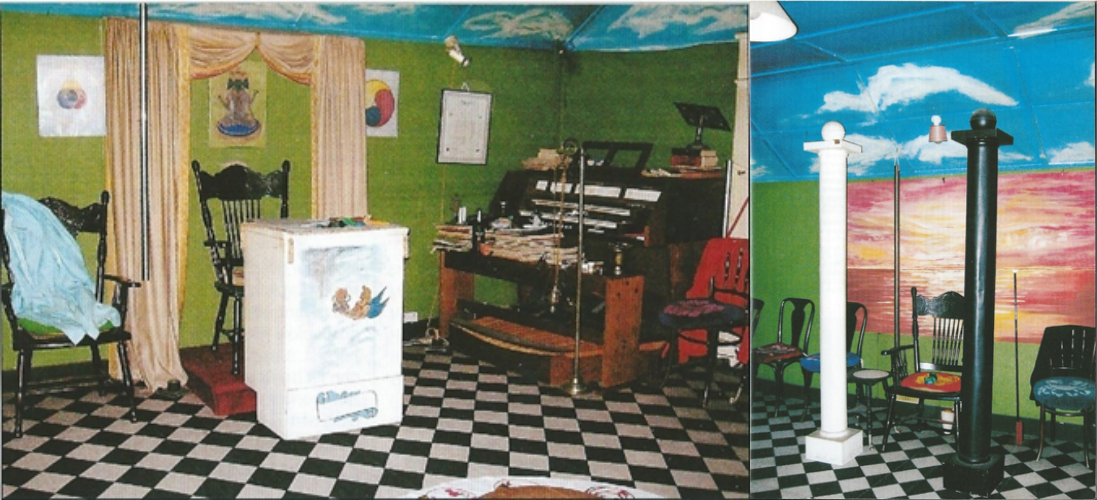
The Temple at the house, with the church organ lifted by a crane through the roof.
IMAGE CREDIT: Author
I have reached the point where I will now talk about the different Orders with some personal reflections.
Before I start, I am going to give you some names, I will return to these names as we go along, they all play a greater or lesser role in the orders I am talking about:
John Walker, Donald Penrose, Desmond Burke, Barry Clarke, David Kibble Rees, Howard Stokes, Benson Catt, Stephen Ayres, Keith Ansell, Ralph Wheeler, Michael Buckley, John Paternoster, Howard Doe, David Price, Gordon Gentry, Ronald Pike, George Cope, John Mitchell, Yasha Beresiner, and of course my good friend Simon Polkinghorne!
This is by no means a full and extensive list. However, all of these men have met at the Temple in Blackheath and been involved in the growth and development of the Blackheath Degrees/Orders.
Sir Thomas of Acon

Andrew’s close friendship with John Walker, and his house already having a Temple in the loft, it was an obvious choice to be the place where the first meetings of this fledgling ‘English’ chivalric order would be held.
The Temple was big enough to comfortably hold twenty-five members – and uncomfortably perhaps thirty – and let’s face it no one could perceive the Order would either attract much attention, or certainly outgrow the space!
John Walker was a keen Masonic researcher and in fact was researching the four original Lodges when he came across reference to the Order of Sir Thomas of Acre.
Please note this is not a talk on the concise history of the Order, I can just say that something about the Order resonated with John and he put aside his researches into the four original Lodges in favour of digging deeper into Acon.
He eventually came across a ceremony of Installation of a Knight of Acre and decided to write a ritual for a new Masonic Order based on the researches he had made.
So, in 1974, the first meeting of the new independent Masonic Order commenced; there was no consecration but knowing Andrew I am sure there was a prayer.
Blackheath Chapel T.I. was born although at the start it was not known as Blackheath Chapel only by the name of the Order!
For twenty-four years the Order met at Andrew’s house, John Walker retired, and Andrew took over as Grand Master.
The Order slowly – and it was very slow – grew and by 1997 it had become impossible for all the members to meet at once.
Andrew retired as Grand Master and handed the reins over to Barry Clarke. Barry was a wonderful Mason and had great plans for the Order, the Chapel relocated to Mark Masons’ Hall and was named Blackheath Chapel T.I.
Barry had organised for the regalia to be manufactured in a similar style to the Knights Templar, this replaced the hand-made regalia, including real scallop shells that had previously been worn.
At the first meeting in Mark Masons’ Hall, thirty-three candidates were admitted; one of those candidates – and the representative candidate – was Simon Polkinghorne.
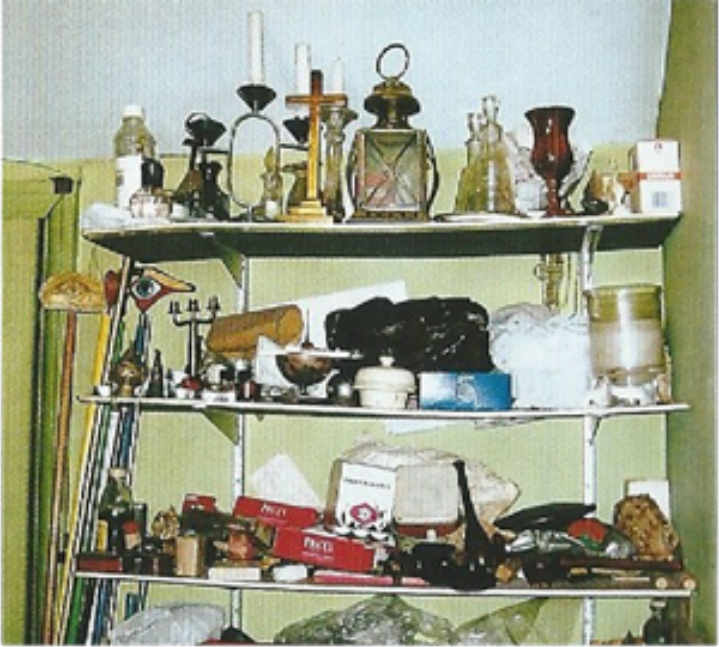
Equipment used in the various ceremonies.
IMAGE CREDIT: Author
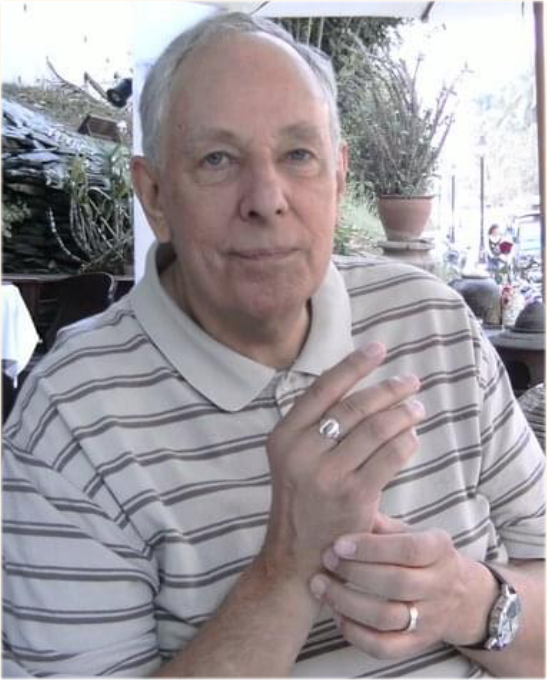
Barry Clarke (1943 – 2012)
Under Barry, the Order became firmly established and started to grow very rapidly, certain regions really took to the order (Yorkshire has four of the first twenty Chapels in its Province).
Barry was a remarkable Freemason and one of the most genuine and kindest men I have ever known.
Whilst he was alive and all the time he knew me he never failed once to send me a letter of congratulations each and every time I received a Masonic honour (and I am honoured to have received quite a few) every time it would be a short and complimentary email.
I often imagined him scrolling through every honours list and getting straight on his computer, because I know he did this for several other friends of mine as well.
Barry was Grand Master for five years and was replaced by David Kibble-Rees, another worthy Mason of mention.
David is a Masonic researcher and has written books on the Operatives and Sir Thomas of Acon, as well as others; he also held the office of Grand Master for five years and handed over to Brian Long.
As you can see, we have travelled a long way from Blackheath. The Order expanded into the USA which is now an Independent Grand Body, and they hold their annual meetings during Washington AMD week normally in February.
Both myself and Simon along with quite a few friends have had the privilege of attending these meetings on at least three occasions the first one before the USA became an independent Order.
I do not exaggerate in saying that Sir Thomas of Acon is the most successful order to come out of Blackheath it has over 120 Chapels in England and Wales and I believe the USA has over 2000 members.
I wonder what John Walker would make of his Order now.
Masonic Order of Pilgrim Preceptors

Again, it has to be acknowledged that the close friendship that Andrew had with John Walker meant that when John decided to progress with starting the Order, he would automatically use the house in Blackheath.
A quick bit of history: in the first quarter of the twentieth century and after 1925, three actors and Masons must have traced in a library of a Masonic Hall or lodge somewhere in Northwestern England, most possibly in the greater Liverpool area, an unknown ritual of Irish origin.
Drafted after the year 1862, it served as the basis for their version of the ritual of the two ceremonies of or belonging to the degree of the Order of Pilgrim Preceptors.
All three, who were Past Masters of the Craft, Past First Principals of the Royal Arch, and members of the Allied Masonic Degrees, found themselves idle and forced to remain in their hotel in Manchester for a long and typically wet weekend because the play in which they had been performing suddenly ‘folded’.
They decided to put this information together and write and develop a Masonic ceremony called ‘The Pilgrim Preceptors’, this they had completed by the end of the weekend!
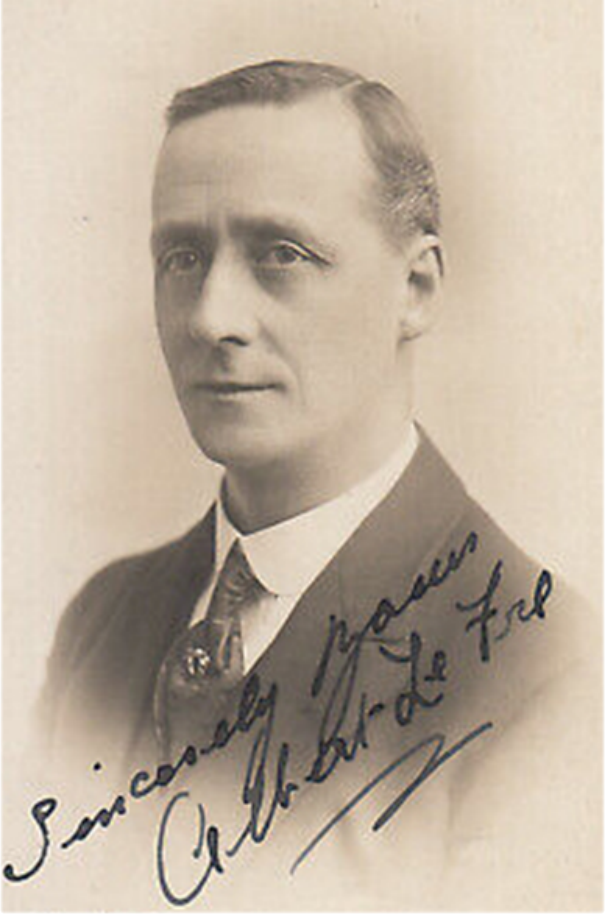
Albert Le Fre. (1870 – 1969)
One of these men was Albert Le Fre. He died shortly before his hundredth birthday and passed the rituals on to his son Eric.
Eric notably did nothing with these original manuscripts, until at an elderly age himself was persuaded by John Walker to confer the Order by obligation on himself for a princely sum of one halfpenny!
So, in 1978, one year before his death, he gave John Walker the manuscript and all the rights to the Order, and that is how we came to see the Masonic Order of Pilgrim Preceptors meeting at Blackheath.
The first candidates were Capt. Donald Michael Penrose, Andrew Barry Stephenson (of course!), George Austin Duke, Arthur William Jary, and Howard Allan Stokes.
Almost immediately John Walker conferred the Grand Mastership on to Howard Stokes simply because he was so involved with Sir Thomas of Acon.
There is very little furniture required in a conclave of Pilgrim Preceptors, so Blackheath was an excellent location.
The Order remained static until Benson Franklin Catt and Brian Gerald Slater persuaded Howard Stokes to get the Order ‘moving’ again!
So, on 8 December 1984, Benson Catt, Brian Slater and Alan Perry were obligated into the Order.
Howard Stokes announced his retirement as Grand Master and because both Brian Slater and another senior member Norman Pitt had both died tragically young, John Walker became the Grand Master appointing Andrew Stephenson as Deputy Grand Master.
Sadly, John Walker died in 1991, and on 4 September 1993, Andrew took over the role of Grand Master.
The Order then started to meet regularly in the mornings of the same day that meetings of the August Order of Light (AOL) met; this obviously meant that all the members at this time were also members of the AOL.
Like Sir Thomas of Acon, the Order remained very small.
However, in 1998, Howard Doe requested a Charter for a Preceptory to be granted to work in Kent, this was duly granted, and the very first additional unit was born and consecrated.
It was titled the St Augustine Preceptory, and Howard was the first Master.
You will note that the first units were called Preceptories and not Conclaves; this changed sometime between 1999-2003. We know this because the 3rd unit was consecrated in York in January 2003, and it was called the Athelstan Conclave.
I will mention the 4th unit because where it held its meetings, ties in with this talk later.
It was the Prince Edwin Conclave and it met at Radlett in Hertfordshire and was consecrated later the same year.
To qualify for membership, one had to be a Past Zerubbabel and the original regalia of the Order was a Past Zerubbabel’s apron, sash, and jewel for entry.
Once you were admitted you wore a special jewel hanging from a brown (Pilgrim) or white collarette (Pilgrim Preceptor) this has now changed to a purple sash with a collarette signifying either Pilgrim (brown), Pilgrim Preceptor (white), or Past Master (purple).
In 2006, Andrew announced he was retiring to Hawkes Bay in New Zealand, and he appointed Benson Catt as Grand Master to replace him.
An interesting anecdote is that Benson Catt wrote the ceremony of Installation of a Master, but he never actually took the ceremony himself.
I was admitted into the Order in a very peculiar situation. The unit at Blackheath moved out of Blackheath in 2005/06 and met at the St Bride Foundation just off Fleet Street.
I had been summoned to attend at 11.00am, on 26 August 2006, on arrival Ralph Wheeler met me and the other candidate and informed us that due to a double booking they could not hold the meeting in the normal room, and we were going to be admitted in the kitchen! I kid you not.
I became a Pilgrim Preceptor in the kitchen of the St Brides Institute in the presence of the Grand Master sitting on an upside-down kitchen bucket!
And members scattered around the kitchen behind various kitchen appliances. It was indeed memorable.
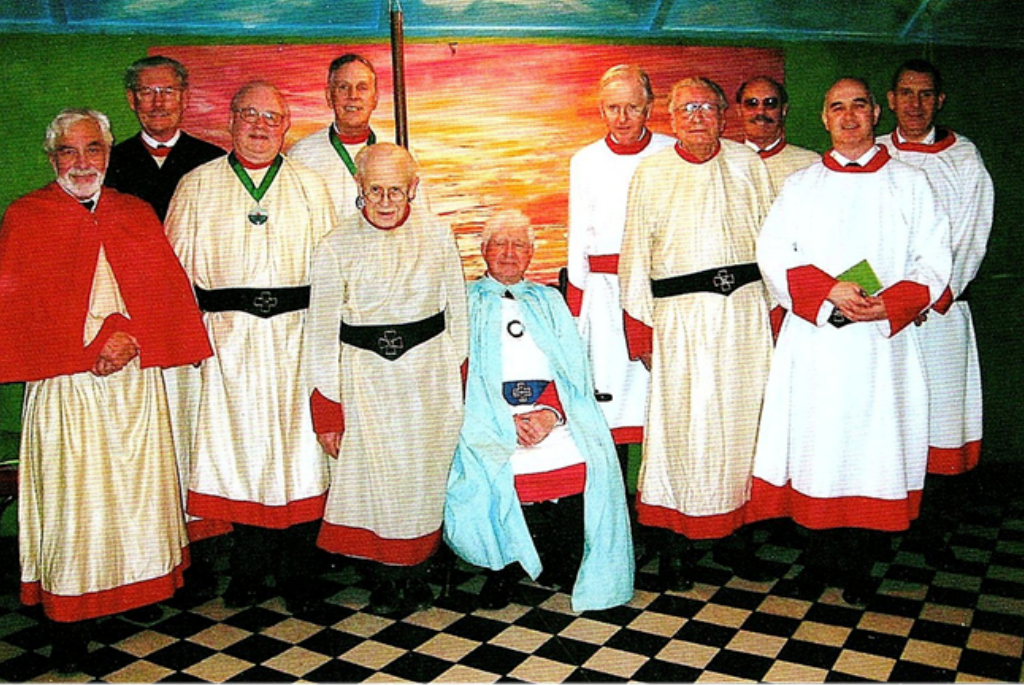
The very last meeting at Blackheath of the August Order of Light in 2006.
IMAGE CREDIT: Author
Like Sir Thomas of Acon, the Order has grown impressively both myself and Simon Polkinghorne were honoured to be founders of the first unit to work in the USA and on 14 February 2010, the Mayflower Conclave was consecrated at Radlett.
Benson Catt announced his resignation as Grand Master in 2011, and Stephen Ayres became his successor.
Stephen was very busy as Grand Master and consecrated several more units.
One further milestone in the Order’s history was added when members of the Grand Conclave consecrated a new Conclave on the Continent of Europe, an event that took place in Athens, Greece, in April 2019.
The future of the Order looks certain, has already thirty-four Courts in its register.
Unfortunately, Stephen died unexpectantly last year, however he had made it known that his wish was for Jonathan Roberts to be made Grand Master and this was accordingly carried out.
That concludes my talk on the Masonic Order of Pilgrim Preceptors.
The Hermetic Chapter of Spiritual Knight
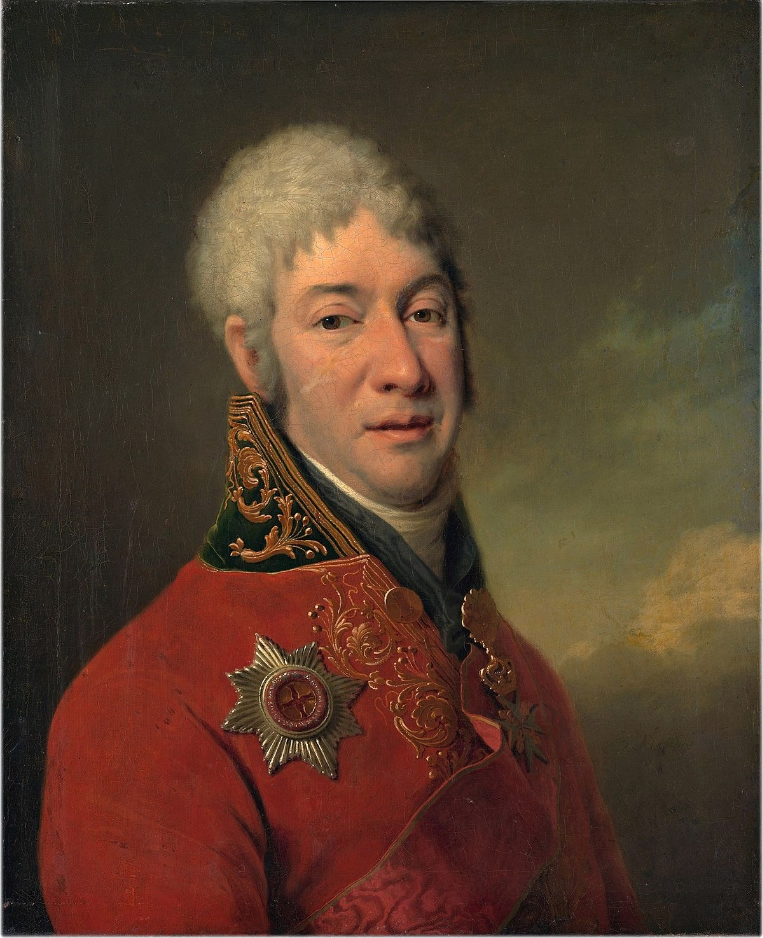
Ivan Vladimirovich Lopukhin (1756 – 1816) was a Russian philosopher, mystic, writer and humanitarian.
Lopukhin was born in 1756 and was a leading figure in Russian Freemasonry, Rosicrucianism and Martinism, being introduced to these philosophical systems by his good friend Nikolay Novikov.
He wrote several books two of which are extremely important to this talk.
The first for obvious reasons in 1791 was ‘The Rite of Reception into the degree of Spiritual Knight’, and the second in 1798, ‘Some Characteristics of The Inner Church.’
I know the library at Hampstead used to hold a copy of the The Inner Church but unfortunately it has been lost.
Lopukhin wrote other books, and the one that particularly stands out to me and was written in 1795 is called; ‘The description of several pictures and tableaus based on some fragments, which are located in the archives of Internal Affairs explaining the motives, actions and downright blindness of the corrupt Frenchmen’.
He was also considered to be something of a politician and perhaps the Brexit Party took inspiration from it! Who knows?
Fast Forward to 1924 and we find that Boris Telepneff (1905-2004), a member of the Societas Rosicruciana in Anglia, wrote a first attempt at creating a ceremony out of the Rite of Reception and this book/paper was again in the Library at Hampstead.
I believe that Desmond Bourke a leading esotericist and also a Freemason, Rosicrucian and Martinist, together with other like-minded individuals, one of whom would have been John Walker collated these rituals to form the ceremony which started its life at Blackheath.
This Order was originally only open to Fully Culminated Martinists and a candidate would enter wearing the white martinistalb.
It was worked very infrequently at Blackheath, normally for the reception of a candidate, there were no certificates issued and very minimal minutes recorded.
At the time Andrew announced his intention to retire to New Zealand he appointed John Paternoster as the new Grand Master.
Shortly after his appointment, a meeting was held at Blackheath, this was attended by six members including the Grand Master and Andrew Stephenson, and I along with Simon Polkinghorne and nine other candidates were admitted in to the Order.
It was a memorable and very spiritual experience.
Within a month of this meeting the Order vacated Blackheath and was split into two units.
One group moved into Radlett and the other went down to Ronald Pike’s House in Otford, his house had the name Kether, and so that was the name adopted by the unit.
The Order started to grow slowly and with the Grand Master having removed the requirement of being a Culminated Martinist it found recruitment a lot easier.
I know Radlett flourished! However, Kether still kept the requirement, really due to the fact that the house could not really cope with any more than ten members.
A major occurrence for the Order was the admission of David Lee Hargett Jnr.
David was an extremely well known and experienced American Freemason and would be involved in the consecration of the first unit in the USA.
The unit at Otford was becoming too big and a large number of members were from the Sutton/Kingston area, so a petition was put into the Grand Master in 2009, and later that year the Sirius Chapter of Spiritual Knight was the first Chapter to be consecrated at the Thomas Wall Centre in Sutton and I was extremely honoured to be its first Master.
On that occasion another first for the order was that Rod Barnes from Australia was the first Australian candidate to be admitted.
The Sirius Chapter was very busy in its first year David Hargett Jnr. was a regular attendee and he put forward three excellent American Masons in the persons of Ed Fowler, Allen Surratt and Aaron Shoemaker, the four were to form the nucleus along with Matthew Dupee (admitted in Radlett) of the first unit to be consecrated outside of England.
Simon Polkinghorne and I (acting as Director of Ceremonies) along with the Grand Master and John Wickes attended Washington AMD week in 2015 Azoth Chapter of Spiritual Knight was consecrated.
The Order remains perhaps the smallest that has come out of Blackheath, but it is slowly expanding under the direction of the Grand Master and has come a long way since Desmond Bourke first introduced this Order to the House.
The August Order of Light
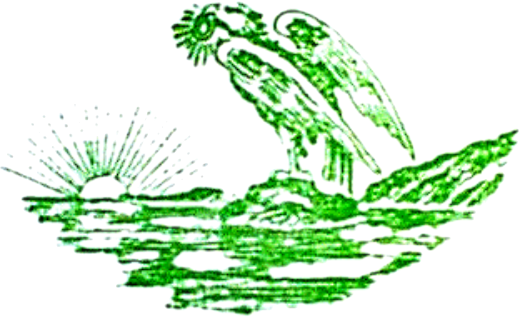
So far, I have only dealt with Orders that actually started life at the house -– the August Order of Light did not start here, or anywhere near Blackheath, it started its life in Bradford.
However, I will tell you about Garuda Temple No. 2, for many years the only other Temple of the Order and its place in the story of the House at Blackheath but first a little history!
The Order is based on some Hindu ideas, in fact the three central figures in the ritual are the Hindu Gods Siva, Brahma and Vishnu.
It was started by Videl Portman (a nephew of Viscount Portman) when he was Deputy Governor of the Anderman Islands.
It is a system very similar to the Sat B’Hai, in Portman’s time, it was incomprehensible to the Freemasons of Bradford, until finally, at the turn of the 20th century he handed the ritual over to two worthy Masons to do what they could with it.
Andrew Stephenson suspected that with the assistance of Dr William Wynn Westcott, a major player in the SRIA being the Supreme Magus, assisted them in reducing the rituals down to three degrees: First Degree, Passing Degree and Second Degree.
They added some Masonic symbolism, and the Order came into being.
Andrew and Fred Scott (later to become the Arch President) were friends and were junior members in the Order in the 1960s, Andrew regularly travelling to Bradford to attend the meetings.
The Order remained small and very elite until around 1970.
At this time Bradford Council ordered the building and the surrounding ones to be pulled down.
This created a unique opportunity for Andrew and John Walker, for they were allowed to set up a new temple in Blackheath, thus Garuda Temple No. 2 came into being.
This worked very favourably for the Order because it meant that it continued to be worked whilst a new Temple was sourced, funded and consecrated in York, where it remained until moving finally to Halifax where it continues to be based.
So, once again a few men who regularly attended Blackheath happily started to meet three times a year in the Temple at Blackheath from 1972 onwards, and once again the unit grew slowly but steadily.
There have been some well-known Masons who have attended and passed through Blackheath for the August Order of Light among them Barry Clarke, Gordon Gentry, George Cope, Ian Burnett, John Mitchell, Leo Zanelli, John Paternoster, Stephen Ayres, Benson Catt, Michael Buckley and James Field all are distinguished freemasons.
Once again in 2005, Andrew announced his intention to retire to New Zealand, and he started to arrange for Garuda No. 2 to move to Radlett in Hertfordshire.
However, candidates were still being allowed to enter and also give their papers, the last candidate at Blackheath was Simon Polkinghorne, the paper he gave was ‘A short history of horror films’, which went down exceedingly well – Simon was then promptly made secretary.
Andrew agreed that Garuda No. 2 should relocate to Radlett, a move not entirely popular with all the members, however, the decision being made, Simon was charged with moving all the furnishings over to Radlett where Ralph Wheeler took control of the moving in.
Andrew appointed Michael Buckley as Nomarch (the head of Garuda No. 2) and remained an attendee until he moved to New Zealand.
With the arrival of two new Arch Presidents, Michael Bottomley and Philip Standfast, the Order started to expand, there are now Temples in India, the USA, New Zealand, and also another one in England.
Unfortunately, due to the difficulty of travelling across Greater London, several members including myself have had to resign from Garuda No. 2, we had hoped to form a new Temple in Sutton, where we had interest from over 20 esoterically minded Masons but were turned down.
I continue to wish the Order every success, it is quite an extraordinary Order and well worth joining if it appeals to you.
The Hermetic Order of Martinists
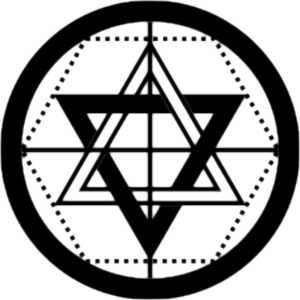
This is an Order that I should know something about.
So far, we have spoken about purely Masonic Orders; Martinism is not a Masonic Order!
It is a form of an initiatic esoteric or mystical Christianity that regards Christ as the ‘Repairer’, and aims for the reintegration of man to attain an idealised state.
It has been around for a considerable length of time and is based around the philosophy of Louis-Claude de Saint-Martin also known as the ‘Unknown Philosopher’, who lived from 1743 to 1803.
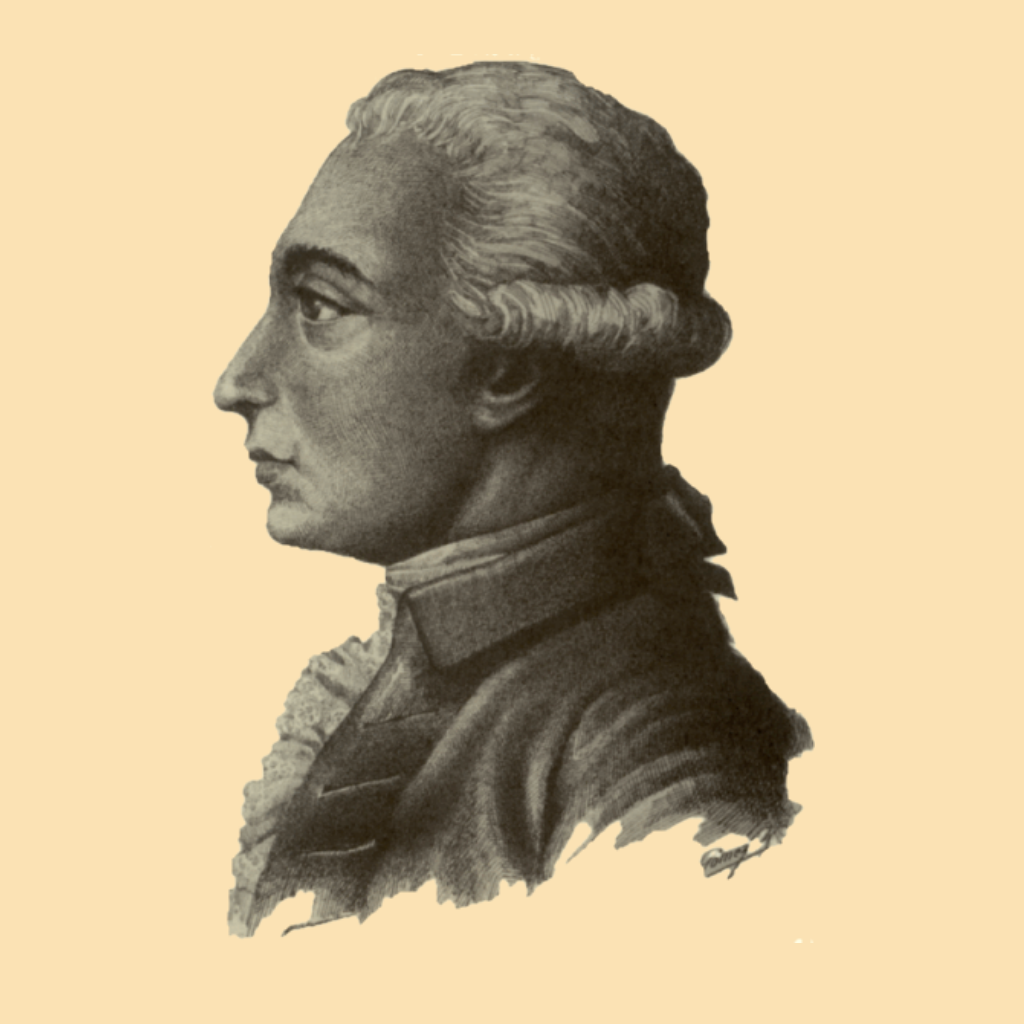
Louis-Claude de Saint-Martin
IMAGE LINKED: wikimedia Attribution 4.0 International (CC BY 4.0)
The Hermetic Order of Martinists (HOM) is a Martinist Order that is only open to Master Masons of a Lodge under the authority of UGLE, or a Grand Lodge recognized as regular by UGLE.
HOM came into existence in 1984, up until then Martinism was being practised in England under the authority of a couple of Martinist Grand Lodges.
However, the one that plays the major part in formation of the Hermetic Order of Martinists is the Ordre Martiniste Synarchie.
In 1984, the Late John Emerson who was to become the first Grand Master, in discussions with John Walker, Desmond Bourke and Andrew Stephenson had for several Months been discussing the possibility of forming a separate Martinist Order, they belonged to the London Lodge that met at Hampstead and were all members of the SRIA.
John Emerson entered into negotiations with Louis Bentin the then Grand Master of the Ordre Martiniste Synarchie and eventually after long discussion it was agreed that the Hermetic Order of Martinists would be chartered.
One of the first Lodges to be consecrated (if not the first) was Meridian Lodge that met at Blackheath, and the reason Blackheath plays such an important role in the growth and wellbeing of the Order is very simple – Andrew Stephenson was to become the Grand Master for many years, and he also made great use of the Gutenberg printer he had in his hallway!
The Hermetic Order of Martinists has three grades and a celebratory final ceremony, after each grade the candidates are given a book to study of which they must be very conversant before they take the next step.
Andrew single-handedly printed these books in great numbers as well as the manuals that are handed to every newly installed Master of a Lodge, this effort alone insured the viability of the Order under his Grand Mastership.
The Order spread;
John Mitchell was involved in starting Brighton Lodge,
Howard Doe and Brian Lobb were involved in starting Medway Lodge in Kent
and George Cope was involved in starting Fenlands in Rushden, along with Hampstead Lodge (the new name of the London Lodge)
These were to remain the five Lodges under Andrew’s Grand Mastership for a considerable time.
There was a Manchester Lodge that unfortunately ceased existing around the time I became Grand Recorder in 2001.
When Andrew announced his intention to emigrate in 2005, he invited me to become Grand Master.
This was a complete shock, and I did not feel I was prepared nor qualified for the job, so I respectively declined.
Andrew however was adamant! But he respected my decision and asked Michael Buckley to take over (Michael was, and is Grand Master of the Martinist Order of Unknown Philosophers) on the understanding that he would appoint me when the time was right.
Unfortunately, due to a very public disagreement between Michael and the New Supreme Magus of SRIA, Michael resigned from the SRIA and felt it best to stand down as Grand Master of HOM.
He immediately kept his word to Andrew and invited me to succeed him, which is how I became Grand Master of HOM in 2007.
I am pleased to say that the Order has continued to flourish; as I speak there are 14 active Lodges in England and the Netherlands, as well as a couple of Martinist Circles (groups of less than seven members).
I stepped down as Grand Master in December 2019 and Installed my successor at Grand Lodge at the same meeting.
Grand Lodge meets at Mark Masons’ Hall annually in December and has done so since 2006.
It is true to say that if Andrew had not opened his Temple to HOM, then I doubt it would be alive today.
The Fellowship of the Rosy Cross
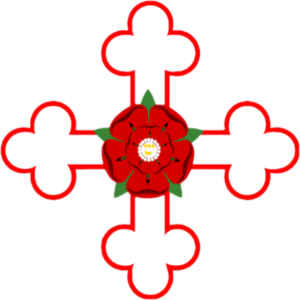
There were other Orders, or meetings, going on at the house in Blackheath apart from those already mentioned.
Andrew was a Bishop in the Gnostic Church, and he used to hold a service every Sunday in the Temple, he used to have five or six attendees regularly on a Sunday evening!
However, the main Order that met at the Temple, outside Freemasonry, was the Fellowship of the Rosy Cross, Arthur Edward Waite’s Order, which he created through his desire to replace the Magical or Theurgic element of the Golden Dawn with a more spiritual path as in the tradition of Louis-Claude de Saint-Martin’s ‘Way of the Heart’.
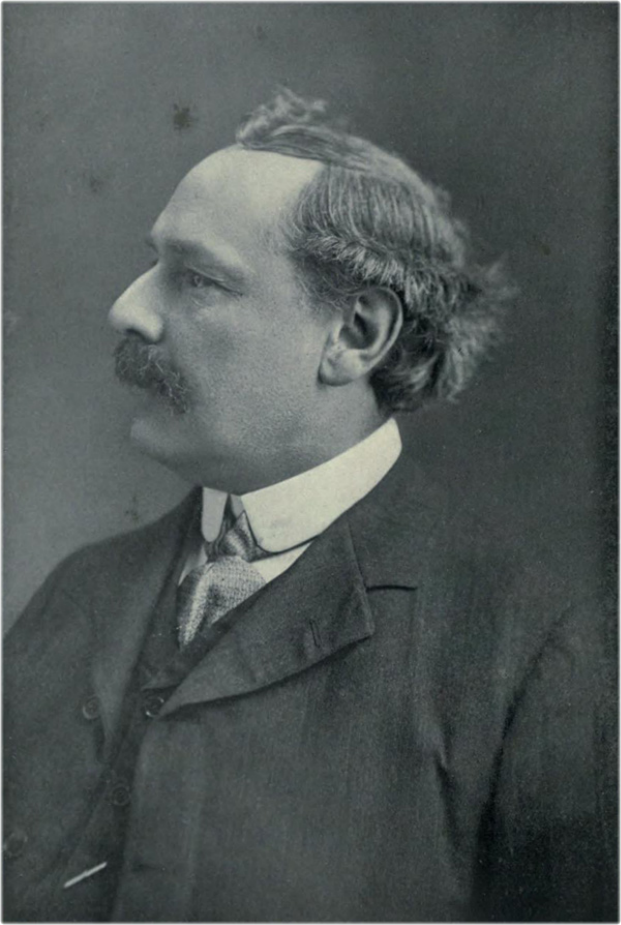
Arthur Edward Waite (1857 – 1942) had been a member of the Golden Dawn for several years and had become increasingly disillusioned with its practices, he was also an accomplished and well-known author, so he set about writing what he considered to be the true path to spiritual reintegration.
In my own opinion I think he was a little bit of a plagiarist! Something Andrew and I discussed over a beer several times.
There is no doubt he drew heavily on his experiences with the Golden Dawn and Martinism, the opening ceremonies are almost identical along with the grade system and the ceremonial rituals borrow heavily from the Martinist ones.
Nevertheless, he completed his system and it started in the summer of 1915.
Unfortunately, we do not have time to go into depth with the history however it is safe to say that by 1943 it was no longer working.
Fast forward to 1965, and we know John Semken a well-known and respected member of the SRIA, along with several other members, decided to revive the Order.
I am not sure when the House at Blackheath became the Order’s home, nor the date that Andrew was named as Imperator, but I do know that when I entered the Order that was the case.
The Fellowship was to become Andrew’s most important work, and it certainly plays a major part in the events leading up to his retirement to New Zealand.
The Order was split in to two hemispheres: obviously the Southern and Northern ones!
The Southern Hemisphere had been nurtured by Andrew and greatly assisted by him in the years preceding, he was a regular visitor to New Zealand, and they all loved him for his knowledge and guidance.
Andrew was one of the most modest men you would ever meet, and he did not want to be Imperator in New Zealand, so in preparation for his move he appointed Roger Weeks as Imperator on his final trip to New Zealand before his move there, which was planned for a couple of years’ time.
Andrew had been elected Supreme Magus of the SRIA and had served almost two years when he received the devastating news that Roger Weeks had been brutally stabbed to death in his bed by a homeless vagrant.
This is the first time that I witnessed the total panic that consumed Andrew.
He saw his dream move on the verge of collapse and was so worried about the Fellowship collapsing, that he immediately resigned as Supreme Magus and brought his move forward.
Andrew appointed Ronald Pike to take over as Imperator and the Order was moved to the Civil Service Club.
Unfortunately, we arrive at a major schism within the Order; Michael Buckley who had resigned from the SRIA after losing his election for Supreme Magus to John Paternoster, and did not like attending, asked Ronald Pike if he could form his own Chapter as he held the appropriate grades.
Ronald refused which caused Michael to resign and he formed his own version with Bob Gilbert.
Ronald being a very peaceful and cautious man, put the Order into obeyance.
A few years later he quietly reopened the Temple in his home at Otford (remember the Spiritual Knight was also there) and the Order was again operating.
It then moved to Hampstead, and as Ronald was getting older and had been diagnosed with a terminal illness, he handed over the reins to Alan Remsbury.
When Alan was diagnosed with dementia, he took the decision to step down and there was a problem with finding a successor.
We find the Order now comes full circle because Michael Buckley was invited to assume the role of Imperator and both lines were merged back again. This is the Order we have today.
Brethren, I would like to finish this talk with my own personal tribute to Andrew, he may have been small in stature, he may have been very humble, but he was immensely strong.
When he thought the lease at Hampstead was going to be sold, as one of the trustees he immediately flew back to England to attend High Council in Leeds to speak.
Luckily, he need not have worried because the sale had been taken off the agenda, I drove him back to his hotel and he asked me to do everything in my power to make sure this situation never happens again, and I gave him my word that I would.
He was without doubt the most esoterically-minded and kind-hearted man I have ever met; he opened his house to all true seekers of knowledge and he was as eccentric as they come – he was just a lovely man.
God Bless Andrew Stephenson for the legacy he has left us.
Article by: Chris Hatton

Threshold of Initiation: Instructions for the Aspirant
By: Ordre Martinistes Souverains (Author)
The “OMS – Threshold of Initiation” PDF contains all the relevant information on the Ordre Martinistes Souverains (OMS), its means, purposes, and how to apply.
Included is the:
-OMS Public Manifesto,
-Pre-Associate Operation,
-Rule of the Ordre in 9 Points,
-Application.
The Application, which is purely confidential, helps us to start to understand your esoteric history so that we can better serve you, and helps us both to ensure that we are a good fit for each other.
The Pre-Associate Operation is required in order to be considered for initiation so that you may test some preliminary exercises, and we can both evaluate if you are a good fit for the Ordre, and if the Ordre is a good fit for you. Please direct further questions to the email grand.chancellor@martinism.net as instructed in the document.

Complete Rosicrucian Initiations of the Fellowship of the Rosy Cross
By: Edward Arthur Waite (Author)
The Golden Dawn is one of most prolific and legendary of all Western secret and esoteric societies.
Hundreds of people, from the rich and famous to the common man, have walked through its halls of the neophyte.
Very few stood as tall in the history of the occult sciences as Arthur Edward Waite, the creator of the Rider Waite Tarot Deck.
He founded the Fellowship of the Rosy Cross in England in 1915. For the first time in more than 80 years, these secret ceremonies are revealed and made available to you.
Included in this volume are the following deeply spiritual rites:
1) Neophyte Initiation,
2) Zelator Initiation,
3) Theoreticus Initiation,
4) Practicus Initiation,
5) Philosophus Initiation,
6) Portal Initiation,
7) Adeptus Minor Initiation,
8) Adeptus Major Initiation,
9) Adeptus Exemptus Initiation, and
10) Return in Light Initiation.
Be part of a historical moment in the tradition of the Western Mysteries.
If you are an aspirant of the Rosicrucian Mysteries or the Golden Dawn Tradition and looking for moving mystical ceremonies filled with high levels of esoteric wisdom, you will find them in this book.
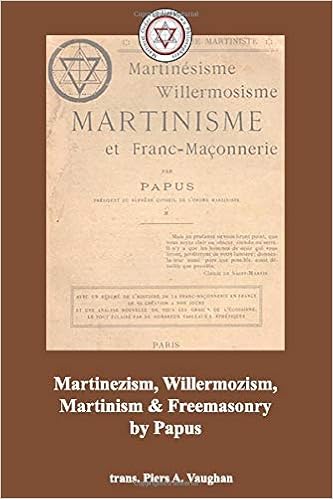
Martinezism, Willermozism, Martinism and Freemasonry
By: Dr. Gérard Encausse (Author), Piers A. Vaughan (Translator)
This seminal book on Martinism was written by Papus (Dr. Gérard Encausse) some twelve years after he founded the Ordre Martiniste in France.
By then the Order had taken root and spread across Europe and the world.
He gives an introduction to the three branches on Martinism’s origins: the Elus Cohen of Martines de Pasqually, the Rectified Rite of Jean-Baptiste Willermoz, and the mystical Christian writings of Louis-Claude de Saint-Martin.
He continues with a scathing analysis of the state of Freemasonry in France at the turn of the twentieth Century, and ends with the comment that Martinism would be an ideal organization to unite the esoteric societies of the world for three reasons:
They have an existing global structure in place; there is no money – and therefore no corruption – involved; and they have no interest in politics (a claim which could not be said of French Freemasonry).
This is an important book in the history of Martinism.
While some of Papus’ comments are either incorrect in light of history, or blatantly propagandist, English-speaking Martinists will find this a valuable addition to their source documents.
Recent Articles: Esoteric Masonry
 Explore the multifaceted concept of the Divine across various cultural and religious perspectives. Delve into the intriguing deliberations on the Great Architect, Demiurge, and their roles in shaping our understanding of the cosmos, blending philosophical, theological, and metaphysical insights into a rich tapestry of human spirituality. |
 Unveiling the Mysteries: Explore the Enigmatic World of Rosicrucianism! Dive into the fascinating origins and teachings of the Rosicrucian tradition, shaped by the mythical figure Christian Rosenkreuz. Discover the secrets of alchemy, spiritual transformation, and esoteric knowledge. Unlock the hidden wisdom that has captivated seekers for centuries. Unleash your inner mystic today! |
 An Esoteric Interpretation of the Holy Royal Arch Delving into the profound mysteries of the Holy Royal Arch, Matt DA Fletcher offers an esoteric interpretation that challenges the conventional understanding of Freemasonry. While Craft Masonry is clear in its teachings, the Royal Arch remains an enigma for many. Fletcher's exploration uncovers the symbolic and philosophical depths of this degree, revealing its significance in the Mason's journey towards reintegration with the Creator. |
 Stoicism, Freemasonry, and the Modern Man Discover how the ancient wisdom of Stoicism can enrich Freemasonry and modern life. Dr. Chacón-Lozsán Francisco M.˙.M.˙. explores Stoic principles like virtue, resilience, and inner peace, offering practical insights for today's challenges. Learn how these timeless teachings can foster personal growth, ethical conduct, and emotional stability. |
 Explore the evolution of Masonic rites with the Universal Rite, a modern adaptation of the Ancient and Accepted Scottish Rite. Discover how it integrates contemporary principles, promotes intercultural dialogue, and ensures the timeless values of Freemasonry remain relevant in today's world. |
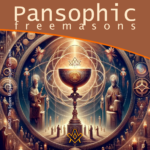 Unveil the secrets of Pansophic Freemasonry, a transformative journey through the ancient mystical traditions. Delve into the sacred realms of Rosicrucianism, Templar wisdom, Kabbalah, Gnosticism, and more. Discover the Graal, the sacred Grail that connects all esoteric paths. Embrace a holistic spiritual quest that reveals the profound mysteries of self and the universe. |
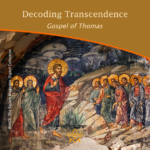 Dive into a spiritual journey where self-awareness is the key to enlightenment. The Gospel of Thomas and Masonic teachings converge on the profound truth that the path to transcendent wisdom lies within us. Embrace a diversified understanding of spirituality, emphasizing introspection as the gateway to a universally respected enlightenment. Explore, understand, transcend. |
 Philosophy the Science of Estimating Values Philosophy is the science of estimating values. The superiority of any state or substance over another is determined by philosophy. By assigning a position of primary importance to what remains when all that is secondary has been removed, philosophy thus becomes the true index of priority or emphasis in the realm of speculative thought. The mission of philosophy a priori is to establish the relation of manifested things to their invisible ultimate cause or nature. |
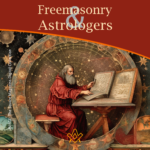 Unlocking the Mysteries: The Surprising Connection Between Freemasonry and Astrologers Revealed! Delve into the intriguing world of Freemasonry and explore its ties to astrological practices. Discover how these two distinct realms intersect, offering a fascinating glimpse into the esoteric interests of some Freemasons. Uncover the hidden links and unravel the enigmatic bond between Freemasonry and astrologers! |
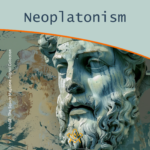 Neoplatonism, a philosophy with profound influence from the 3rd to the 6th century, merges Platonic ideals with Eastern thought, shaping Western and Middle-Eastern philosophy for two millennia. It emphasizes the unity of the individual with the supreme 'One', blending philosophy with theology and impacting major religious and philosophical movements, including Christianity and Islam. |
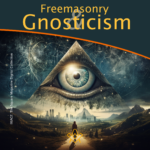 The enigmatic allure of Freemasonry's ancient rituals and Gnosticism's search for hidden knowledge capture the human spirit's endless quest for enlightenment. Between the stonemason's square and the Gnostic's divine spark lies a tantalizing intersection of philosophy, spirituality, and the pursuit of esoteric wisdom. Both traditions beckon with the promise of deeper understanding and moral elevation, inviting those who are drawn to unravel the tapestries of symbols and allegories. Whether through the fellowship of the lodge or the introspective journey of the soul, the paths of Freemasonry and Gnosticism represent a yearning to connect with something greater than ourselves—an impulse as old as time and as compelling as the mysteries they guard. |
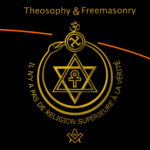 Embark on a journey through time and spirituality with our in-depth exploration of the Theosophical Society's Seal. This ancient emblem, rich with symbols, bridges humanity with the cosmos, echoing through the world's great faiths and diverse cultures. Our paper delves into the six mystical symbols, untangling their profound meanings and tracing their presence in historic art worldwide. Unaffiliated with worldly movements, these symbols open a window to esoteric wisdom. We also probe potential parallels with Freemasonry, seeking threads that might connect these storied organizations. Join us in unveiling the universal language of the spirit encoded within this enigmatic Seal. |
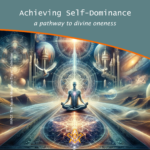 Discover the pathway to divine oneness through the concept of self-dominance. This thought-provoking essay explores the profound connection between self-control, spiritual growth, and achieving unity with the divine essence. With an interdisciplinary approach, it offers practical steps towards expanding consciousness and deepening our understanding of the divine. |
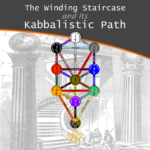 The Winding Staircase and its Kabbalistic Path The Winding Staircase in freemasonry is a renowned symbol of enlightenment. In this article, we explore its connection to Kabbalistic thought and how it mirrors the inner growth of a candidate as he progresses throughout his Masonic journey. From faith and discipline in Binah, to strength and discernment in Geburah, and finally to victory and emotional intuition in Netzach, each step represents a crucial aspect of personal development. Join us as we delve into the esoteric meanings of this powerful symbol. |
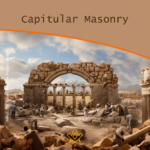 Unravel the mystic origins of Capitular Masonry, a secretive Freemasonry branch. Explore its evolution, symbolic degrees, and the Royal Arch's mysteries. Discover the Keystone's significance in this enlightening journey through Masonic wisdom, culminating in the ethereal Holy Royal Arch. |
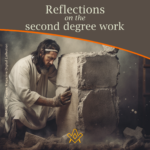 Reflections on the Second Degree Work Bro. Draško Miletić offers his reflections on his Second Degree Work – using metaphor, allegory and symbolism to understand the challenges we face as a Fellow Craft Mason to perfect the rough ashlar. |
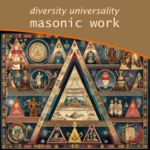 Diversity and Universality of Masonic Work Explore the rich tapestry of Masonic work, a testament to diversity and universality. Uncover its evolution through the 18th century, from the stabilization of Symbolic Freemasonry to the advent of Scottish rite and the birth of Great Continental Rites. Dive into this fascinating journey of Masonic systems, a unique blend of tradition and innovation. Antonio Jorge explores the diversity and universality of Masonic Work |
 Nonsense as a Factor in Soul Growth Although written 100 years ago, this article on retaining humour as a means of self-development and soul growth is as pertinent today as it was then! Let us remember the words of an ancient philosopher who said, when referring to the court jester of a king, “It takes the brightest man in all the land to make the greatest fool.” |
 Freemasonry: The Robe of Blue and Gold Three Fates weave this living garment and man himself is the creator of his fates. The triple thread of thought, action, and desire binds him when he enters into the sacred place or seeks admittance to the Lodge, but later this same cord is woven into the wedding garment whose purified folds shroud the sacred spark of his being. - Manly P Hall |
 By such a prudent and well regulated course of discipline as may best conduce to the preservation of your corporal and metal faculties in the fullest energy, thereby enabling you to exercise those talents wherewith god has blessed you to his glory and the welfare of your fellow creatures. |
 Jacob Ernst's 1870 treatise on the Philosophy of Freemasonry - The theory of Freemasonry is based upon the practice of virtuous principles, inculcating the highest standard of moral excellence. |
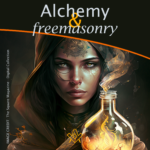 Alchemy, like Freemasonry, has two aspects, material and spiritual; the lower aspect being looked upon by initiates as symbolic of the higher. “Gold” is used as a symbol of perfection and the earlier traces of Alchemy are philosophical. A Lecture read before the Albert Edward Rose Croix Chapter No. 87 in 1949. by Ill. Bro. S. H. Perry 32° |
 The spirit of the Renaissance is long gone and today's globalized and hesitant man, no matter ideology and confession, is the one that is deprived of resoluteness, of decision making, the one whose opinion doesn't matter. Article by Draško Miletić, |
 A Mason's Work in the First Degree Every Mason's experiences are unique - here writer and artist Draško Miletić shares insights from his First Degree Work. |
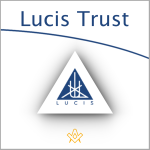 Initiation and the Lucis Trust The approach of the Lucis Trust to initiation may differ slightly to other Western Esoteric systems and Freemasonry, but the foundation of training for the neophyte to build good moral character and act in useful service to humanity is universal. |
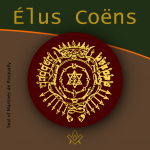 Who were the mysterious 18th century Élus Coëns – a.k.a The Order of Knight-Masons Elect Priests of the Universe – and why did they influence so many other esoteric and para-Masonic Orders? |
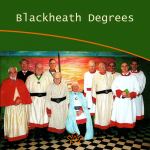 Bro. Chris Hatton gives us his personal reflections on the history of the 'house at Blackheath and the Blackheath Orders', in this wonderful tribute to Andrew Stephenson, a remarkable man and Mason. |
 Book Review - Cagliostro the Unknown Master The book review of the Cagliostro the Unknown Master, by the Editor of the book |
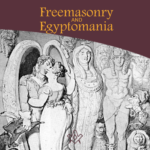 We explore fascinating and somewhat contentious historical interpretations that Freemasonry originated in ancient Egypt. |
 Is Freemasonry esoteric? Yes, no, maybe! |
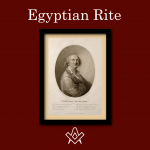 Egyptian Freemasonry, founder Cagliostro was famed throughout eighteenth century Europe for his reputation as a healer and alchemist |
masonic knowledge
to be a better citizen of the world
share the square with two brothers

click image to open email app on mobile device


